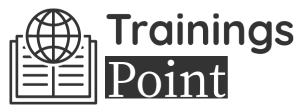Job descriptions have become extremely important for employers. Courts are required to give deference to an employer’s description of essential functions of the job as long as they are listed in a job description that was in place before the employer sought applicants. Yet, some employers have discovered that job descriptions have hurt them in court – in large part because the employer failed to consider the job description as a constant work in progress and failed to keep them up to date.
WHY SHOULD YOU ATTEND?
Job descriptions have so many purposes for an employer – they help in the recruitment and interviewing process so that you can get that ideal candidate to come to work for your company. It helps the employee know exactly what are your expectations. And, finally, it helps the employer defend itself in court – as long as they are written correctly. In this webinar, we will discuss how to write an effective job description how to use them to attract and retain quality employees, and how to use them if you find yourself in the unfortunate situation of being sued.
AREA COVERED
- Writing effective job descriptions – words to use and words to avoid
- Bonus tips for writing job descriptions
- Best practices for writing job descriptions
- Most common mistakes in writing job descriptions
- New approaches to writing job descriptions
- Using AI in writing job descriptions
- How to improve your chances that your job descriptions will help you win in court
LEARNING OBJECTIVES
- Learn how to write an effective job description
- Learn best practices for writing job descriptions
- Learn how to be flexible in your approach to writing job descriptions
- Learn how to use job descriptions in the interview process
- Learn from the mistakes of others when job descriptions hurt them in court
WHO WILL BENEFIT?
- Human resource professionals.
- hiring managers.
- recruitment managers.
Job descriptions have so many purposes for an employer – they help in the recruitment and interviewing process so that you can get that ideal candidate to come to work for your company. It helps the employee know exactly what are your expectations. And, finally, it helps the employer defend itself in court – as long as they are written correctly. In this webinar, we will discuss how to write an effective job description how to use them to attract and retain quality employees, and how to use them if you find yourself in the unfortunate situation of being sued.
- Writing effective job descriptions – words to use and words to avoid
- Bonus tips for writing job descriptions
- Best practices for writing job descriptions
- Most common mistakes in writing job descriptions
- New approaches to writing job descriptions
- Using AI in writing job descriptions
- How to improve your chances that your job descriptions will help you win in court
- Learn how to write an effective job description
- Learn best practices for writing job descriptions
- Learn how to be flexible in your approach to writing job descriptions
- Learn how to use job descriptions in the interview process
- Learn from the mistakes of others when job descriptions hurt them in court
- Human resource professionals.
- hiring managers.
- recruitment managers.
Speaker Profile
 Susan Fahey Desmond
Susan Fahey Desmond
Susan Fahey Desmond is a partner with McGlinchey Stafford, PLLC which has offices in 33 states across the country. She has been representing management in all areas of labor and employment law for over 35 years. A noted author and speaker, Susan is listed in Best Lawyers in America and has been named by Chambers USA as one of America’s leading business lawyers
Upcoming Webinars

FDA Compliance And Laboratory Computer System Validation

The Anti-Kickback Statute: Enforcement and Recent Updates

Creating a Successful Job Rotation Program

Transforming Anger And Conflict Into Collaborative Problem …

Aligning Your HR Strategy with Your Business Strategy

How To Create Psychological Safety in your Organization

How to Give Corrective Feedback: The CARE Model - Eliminati…


Zero Acceptance Sampling to Reduce Inspection Costs

AI at Your Service: Enhancing Your Microsoft OfficeSkills w…

Identifying, Managing, and Retaining High Potential Employe…


Why EBITDA Doesn't Spell Cash Flow and What Does

Female to Female Hostility @Workplace: All you Need to Know

Human Factors Usability Studies Following ISO 62366 and FDA…

Developing and Implementing Quality Culture in the Organiza…

Dealing With Difficult People In Life & Work

How to Document Employee Discussions and Why it is Important

Project Management for Non-Project Managers - How to commun…

FDA Recommendations for Artificial Intelligence/Machine Lea…

2-Hour Virtual Seminar on the 6 Most Common Problems in FDA…

Enhancing Pivot Tables with Images: Visualize Your Data Lik…

How to Deal with Employees Who Love to Argue and Debate Eve…

How to Write Contracts for Procurement Professionals

Project Management for administrative professionals

Sunshine Act Reporting - Clarification for Clinical Research


Reprogramming your mind for Corporate Excellence: 4 Steps t…

Terminating Toxicity: Strategies For Leaders To Confidently…

Transform Data into Insights: A Beginners Guide to Excel Pi…

Onboarding Best Practices for 2025: Proven Strategies to Po…

How to Manage the Legal Landmine of the FMLA, ADA and Worke…

Uplifting the Credibility of HR: How to Build the Credibili…

How to Write Effective Audit Observations: The Principles f…

Strategic Interviewing & Selection: Getting the Right Talen…


Bridging Generational Divides in the Workplace

Onboarding Best Practices for Millennial and All Employees

Performance of Root Cause Analysis, CAPA, and Effectiveness…


Emotional Intelligence: Mastering the Emotions of Great Lea…

FDA Audit Best Practices - Do's and Don'ts

2-Hour Virtual Seminar on How to Conduct an Internal Harass…

Successful Strategies for FDA Expedited Pathways for Your D…

Regulation update Q1 2025: New and Proposed Regulations for…

Unlock Employee Loyalty: Stay Interviews Will Keep Them Eng…

Pay Transparency in Action: Strategies for Building Trust a…

Excel Lookup Functions: VLOOKUP, HLOOKUP, and XLOOKUP Made …
